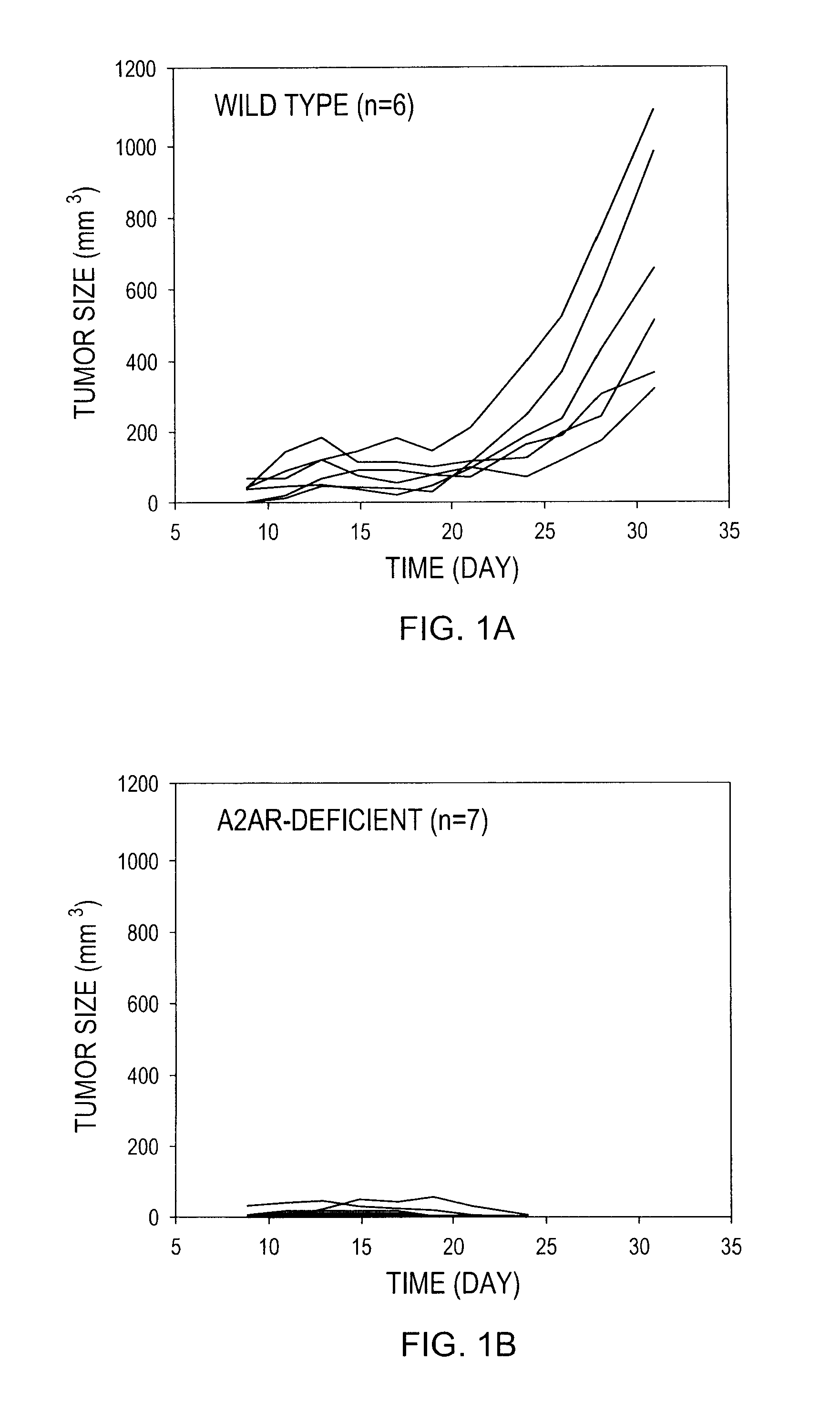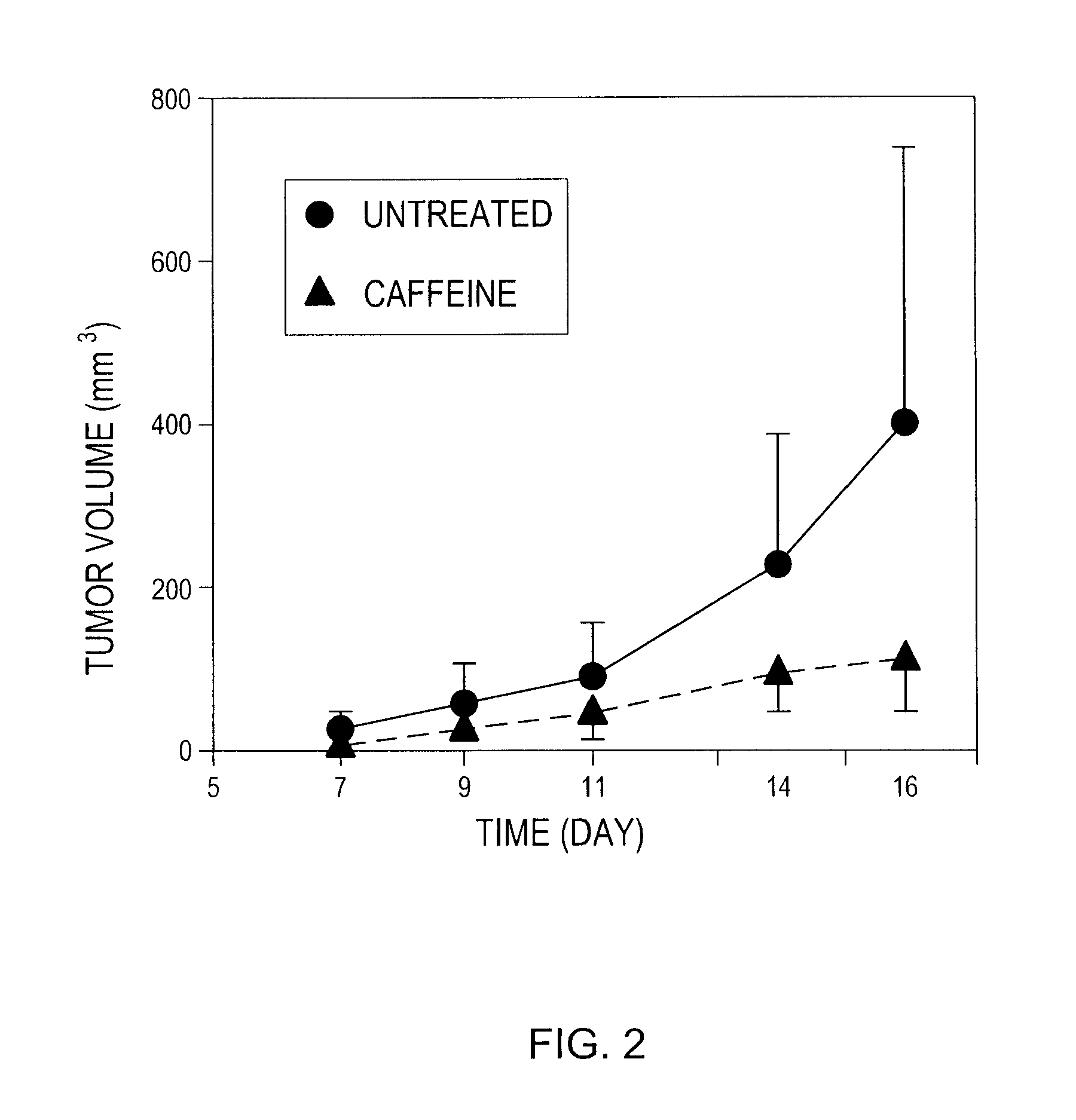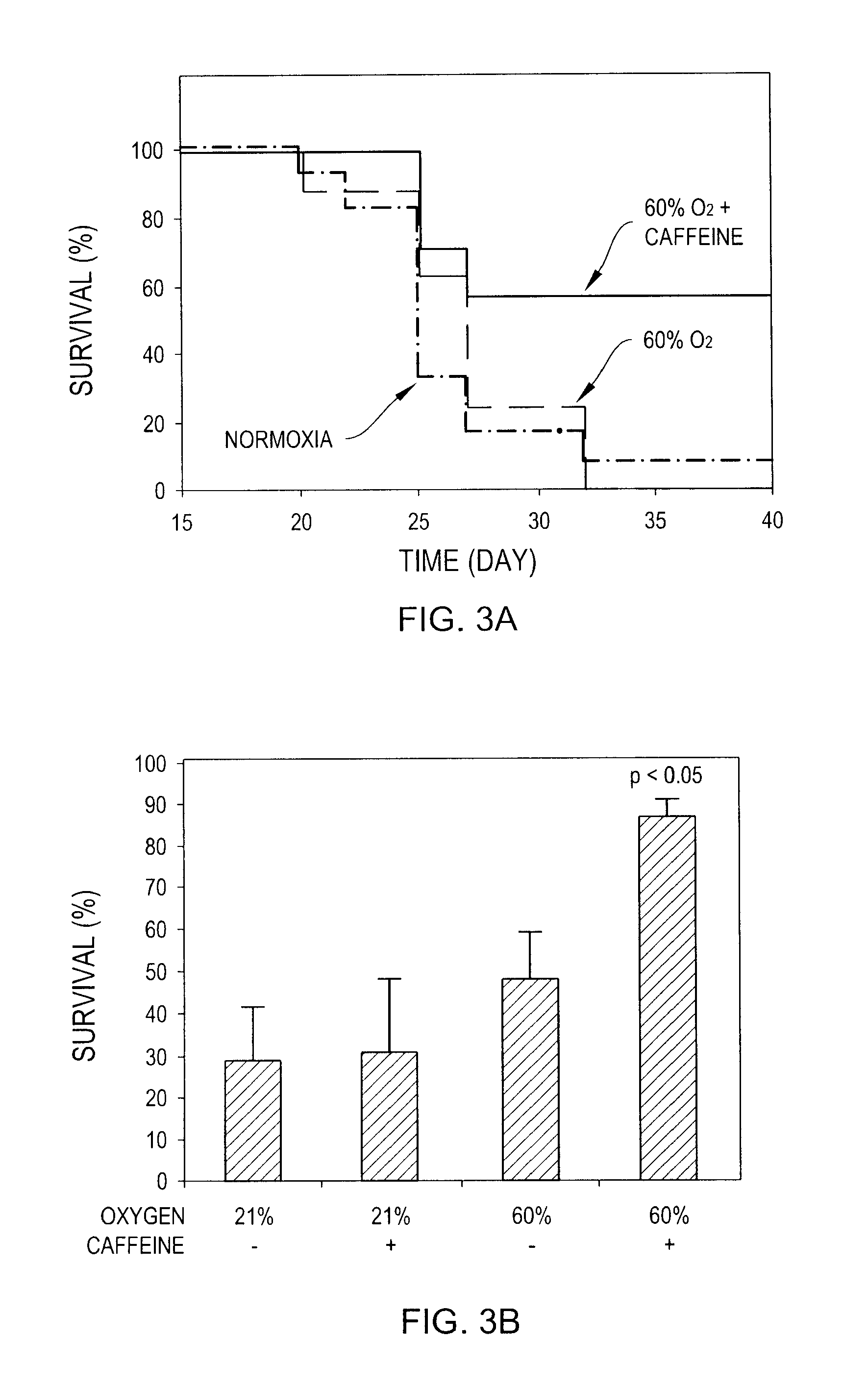Methods and compositions for improving immune responses
a technology of immune response and composition, applied in the field of methods and compositions for improving immune response, can solve the problems of increasing the risk of cancer on the patient's life and wellbeing, affecting the survival rate of patients, and affecting the quality of life of patients, so as to reduce the size of the tumor, the volume of the tumor and/or the number of tumors, and the effect of reducing the siz
- Summary
- Abstract
- Description
- Claims
- Application Information
AI Technical Summary
Benefits of technology
Problems solved by technology
Method used
Image
Examples
example 1
Combined Treatment with Caffeine and High Oxygen Improves Rejection of RMA T Lymphoma
[0311]1. Methods
[0312]Wild type C57BL / 6 mice were inoculated with either a high dose of RMA T lymphoma cells (3×105 cells) or a low dose of RMA cells (2×105 cells). The RMA T lymphoma cells express H-2Kb molecules. Tumor cells were washed and suspended in PBS and injected s.c. (100 μl of cell suspension / mouse). Perpendicular tumor diameters were measured and tumor volumes were calculated according to the formula a2×b×0.52, where “a” is the smaller and “b” is the larger tumor diameter. The experiment was terminated when tumors reached 2.0 cm in diameter or became ulcerated. Animal experiments were performed according to the protocol approved by Institutional Animal Care and Use Committees (Northeastern University and NIAID).
[0313]Treatment with caffeine was started immediately after the inoculation of tumor cells. Caffeine (Sigma, St. Louis, Mo.) was given in the drinking water (0.1% w / v). Control as...
example 2
Combined Treatment with Caffeine and High Oxygen Improves Effectiveness of Vaccine Immunization
[0319]1. Methods
[0320]100 μl of 1 mg / ml of a solution of 2,4,6,-Trinitrophenyl hapten conjugated to Keyhole Limpet Hemocyanin (TNP-KLH, Biosearch Technologies Inc., Novato Calif.) with complete Freund's adjuvant (CFA) were injected s.c. to two sites in the back of 3-month old female C57B1 / 6 mice. Control mice (n=4) were housed in normal oxygen conditions. Other mice (n=8) were kept at 60% oxygen, and half of them were given drinking water containing 1 mg / ml of caffeine instead of regular drinking water. After 14 days mice received booster immunization with TNP-KLH combined with incomplete Freund's adjuvant (IFA). Mice were sacrificed 14 days after booster immunization and blood was collected through heart puncture. Sera were prepared from the blood samples by incubation at room temperature (RT) for 2 hr. and subsequent centrifugation at 2700 g for 3 min. For indirect ELISA measurements of ...
example 3
Tumor Cell Vaccine
[0324]1. Model of Human Vaccine in Mice
[0325]Tumor melanoma cells are transfected with GM-CSF then irradiated or treated with anti-proliferative drug, mitomycin C, in order to prevent the proliferation of these tumor vaccine cells in a patient to be injected with this vaccine. After injection, the dying cells of cancer vaccine will release GM-CSF into the patient and this results in enhancement of anti-tumor immune response. Hodi F S, Dranoff G. Combinatorial cancer immunotherapy. Adv Immunol. 2006; 90:341-68
[0326]2. Method of Treatment with A2AR-Specific Antagonist KW6002 and High Oxygen Atmosphere to Significantly Retard Tumor Growth.
[0327]B16 melanoma (1×106 cells, s.c.) were inoculated to syngeneic C57BL / 6 mice. All the mice received tumor vaccination, GM-CSF transfectant of B16 cells (1×106 cells, s.c.), for 3 times in every week starting from day 2. On the same day, treatment with KW6002 (2 mg / kg, daily s.c. injection) and / or 60% oxygen was started until the ...
PUM
| Property | Measurement | Unit |
|---|---|---|
| diameter | aaaaa | aaaaa |
| diameter | aaaaa | aaaaa |
| diameter | aaaaa | aaaaa |
Abstract
Description
Claims
Application Information
 Login to View More
Login to View More - R&D
- Intellectual Property
- Life Sciences
- Materials
- Tech Scout
- Unparalleled Data Quality
- Higher Quality Content
- 60% Fewer Hallucinations
Browse by: Latest US Patents, China's latest patents, Technical Efficacy Thesaurus, Application Domain, Technology Topic, Popular Technical Reports.
© 2025 PatSnap. All rights reserved.Legal|Privacy policy|Modern Slavery Act Transparency Statement|Sitemap|About US| Contact US: help@patsnap.com



